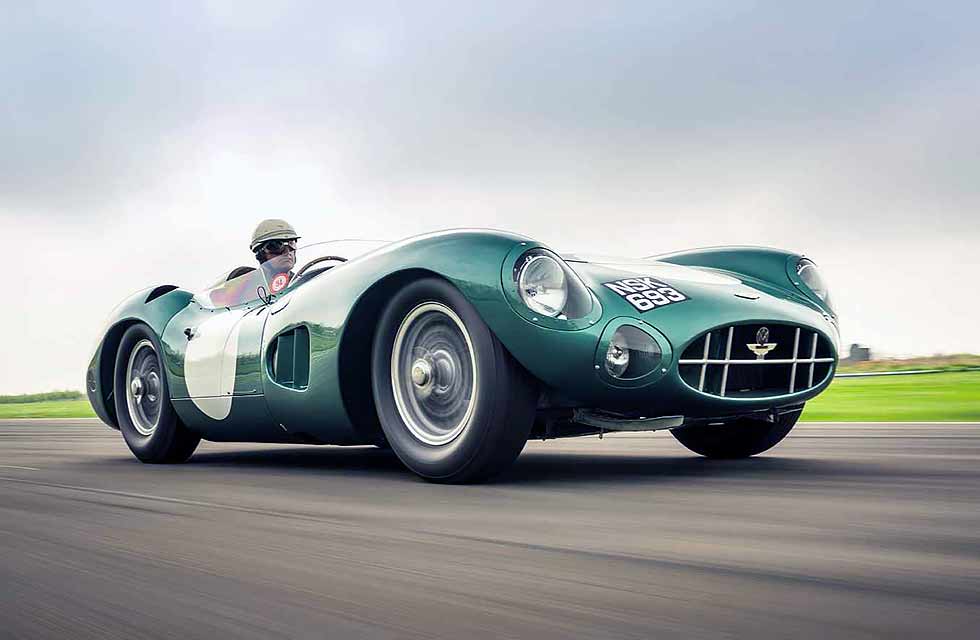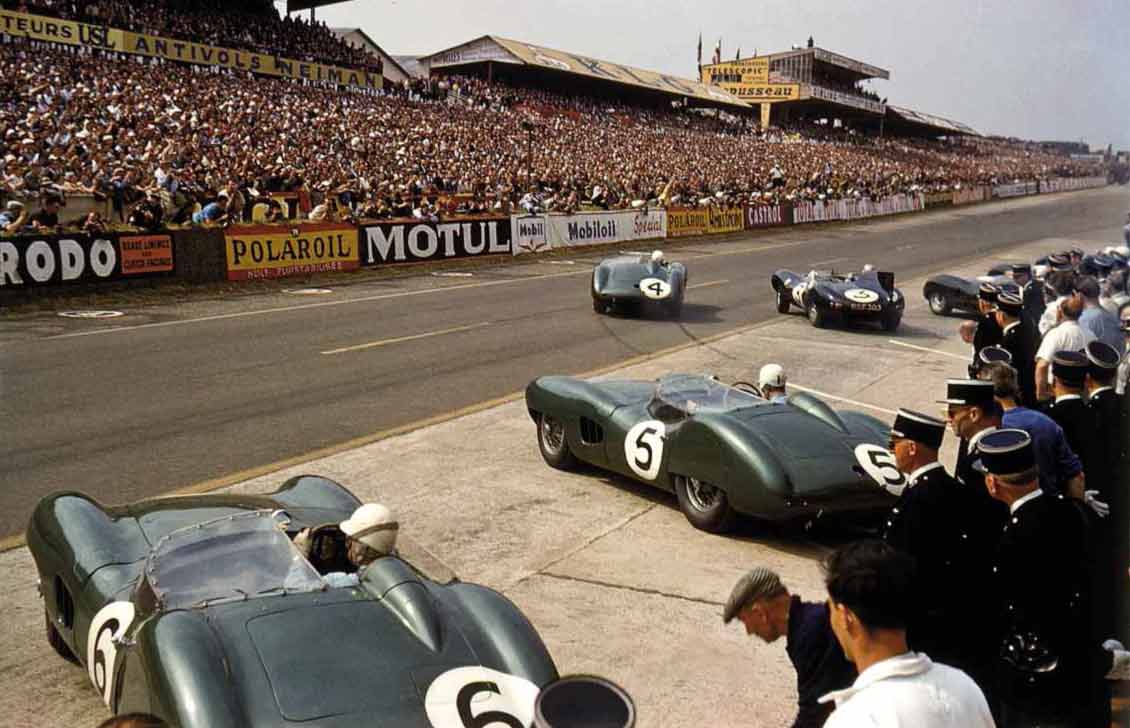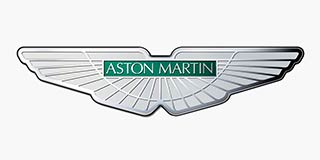
Cover story DBR1 drive. Sixty years ago, Aston Martin won Le Mans with the brilliant DBR1. We drive the car that finished second that day, and explore just what made the DBR1 such a world-beater. Words Stephen Archer. Photography Tim Andrew.
DBR WON! ASTON ICON RELIVING LE MANS 1959 IN THE LEGENDARY DBR1
COVER STORY: DBR1 TRACK TEST DBR1/4 finished second at Le Mans in 1959. Stephen Archer samples it today.
Spoiler alert: this is the greatest Aston Martin ever. So there you have it. Savour the pictures and enjoy the rest of your day. Not so fast, Archer, I hear you say, that’s quite a claim. But greatness, I would contend, is not an entirely subjective thing. Rather like art, it can be measured by the achievement in light of the intent. And in this regard the DBR1 gets off to a very good start indeed.
‘THERE’S A FEELING OF INTIMATE CONNECTION HERE… CAR AT ONE WITH THE DRIVER’

David Brown wanted to win Le Mans from the moment he bought Aston Martin in 1947. After 12 years of trying, coming very close on a few occasions and achieving many class successes along the way, he and Aston Martin finally took the Le Mans winner’s flag 60 years ago. Two generations on, and after a lot of other fine Astons have come and gone, that alone puts the DBR1 in a class of one.
But aside from its racing success, the DBR1 is also remarkable for having been designed virtually in its entirety by one person, an under-sung hero: Ted Cutting. This engineering genius, and I don’t use the word lightly, was responsible for the entire car apart from the gearbox, which was a development of the David Brown-built ‘box for the V16 Grand Prix BRM (in turn based on a pre-war Grand Prix Mercedes unit). Looking at the car today – and driving it – leaves you bewildered that one man could have achieved so much. But this masterpiece was all the work of the modest and much-missed Ted Cutting.
Cutting had taken over as chief designer for the company’s racing cars in 1955. Although there was clearly room for improvement, the DB3S was still a competitive car – but Aston Martin was intent on beating the Mercedes-Benz 300 SLRs, and that ambition would require a new one. Work on the DBR1 started in August 1955.

A primary aim was lightness. Ted wanted a lightweight structure and stiffness too, and his brilliant new ‘perimeter’ spaceframe delivered this, the DBR1 tipping the scales at a smidge over 800kg. A new de Dion rear suspension set-up had at its heart the five-speed, magnesium-cased transaxle with its ‘dog’ gears. Front suspension was a trailing-link arrangement similar to the DB3S’s and springing all round was by adjustable torsion bars, while the steering was rack-and-pinion.
The ‘RB6’ straight-six engine was a new, all-alloy design with a 60-degree twin-plug cylinder head derived from the final evolution of the DB3S unit. The RB6 was lighter and stronger than what had gone before, while a dry sump allowed it to be placed lower in the chassis. Camshafts and oil pump were driven by a gear- set to rival a Swiss watch – a design that also promoted compactness. With a new 95-degree head for 1957, the 3.0-litre version produced around 255bhp. Crucially, with a lightweight engine and rear transaxle, weight distribution was nigh-on perfect. The centre of gravity was also greatly lowered compared with a DB3S, the driver sitting much nearer to the tarmac.
‘IT’S PULLING HARD NOW, PILING ON SPEED WITH EASE, TACHOMETER NEEDLE MARCHING AROUND THE DIAL.’
Ted Cutting designed the body for the 1956 prototype DBR1 but racing supremo John Wyer saw room for improvement so, with Steve Stephens, Cutting took tin-snips to the bodywork to create the far more elegant car that we now know, the panels rolled from ultra-thin 20-gauge aluminium magnesium alloy. It all added up to a machine that Stirling Moss would describe as ‘possibly the best handling sports racing car of all time’.

For a number of reasons, we couldn’t get to drive the Le Mans winner for this feature. The car that came second is hardly a let-down, though, and it does have a few advantages. Firstly, it is fresh from a rebuild and in very fine fettle thanks to the attentions of leading Feltham Aston specialist Chris Woodgate. The other benefit to testing this car is that we actually have two cars in one – sort of. For this DBR1 started life as the one and only DBR3.
Let me explain. In 1958, the race team was also trying Tadek Marek’s new DB4 engine. This 3.7-litre six was installed in a bigger version of the DBR1, known as the DBR2. But it was also decided to try a stroked-down 3.0-litre version with six single-choke Webers. Fitted in a DBR1 with DB4-style independent front suspension, this was the DBR3. Moss took it to Silverstone in May 1958 for its only race. It ran well enough but was out-gunned by the DBR2s. Moreover, the engine was judged to be no improvement on the RB6, and it was heavier, too. Experiment over, the DBR3 returned to Feltham and under the guidance of Rex Woodgate (yep, Chris’s father) the car was rebuilt to DBR1 spec.
Driving the DBR1 is, of course, an enormous privilege. Given that the winning car changed hands for £20 million eight years ago, there is a certain frisson as you approach it, no matter how many special Astons you may have been fortunate enough to drive. There’s no denying the value is a little intimidating, so you simply have to put it to the back of your mind. And the value, of course, is not just financial; it is as much about the huge significance of the car. And then there’s the perfection of the lines. It may lack the classic ‘pinched lips’ Aston face but this is a thing of humbling beauty. You just know that you have to respect it and honour it.
There are doors to aid entry when you’re not in a hurry, or if your legs are short, but hopping straight in is easy and fun thanks to the lowness of the car. The seats are generous buckets and with their tweedy-looking nylon coverings are very comfortable, as they needed to be for 24 hours of occupation. ‘Pure’ describes the view forwards. Looking over the ‘screen, which is really just a wind deflector, the wings extend with such grace to the headlights. The bonnet blends in with smooth perfection, its catches flush-fitting Hawker Hunter panel latches.
Right of the driver’s backside is the oil tank for the gearbox, and in front of that the engine oil tank. Between your legs is an aircraft fuel supply selector cock. In front of the seat on the floor is the small gate for the 8in gearlever. It is unconventionally sited, but it is in reality very easy to use right next to your left thigh. Central to the dashboard is a large Jaeger chronometric tachometer complemented by the other essential gauges and Rotax aircraft switches.
Starting the DBR1 requires a careful sequence of actions. Fuel pumps on to prime the priceless, sand-cast racing Webers. Then fuel pumps off, declutch to save spinning up the gearbox, press the starter button until oil pressure starts to register: even on the starter, 601b will be seen. Keep it turning over, then flick the pump/ ignition toggle and the engine fires. This method removes the chance of kick-back and then carb spit-back with its potential fire risk.
Once running, the straight-six needs light coaxing before temperature is attained, but soon enough the oil and water temp gauges are in their comfort zone. With a solid-mounted engine the whole car is now alive, while the exhaust note is perfection, no crackle and pop but smooth firing with an underlying sense of urgency thanks to a light flywheel.
In period, some drivers complained that the gearshift was obstinate, but others found it fine and DBR1 /4’s ‘box certainly has no reluctance to shift. The throw is short, rather like the one you might find in a single-seater and so direct that it feels as if you’re reaching straight into the gearbox, which is only a few inches behind you. No click, no noise, just positively into gear. The first few times I double-check that it’s in – yet every time it is where it should be. How can this be so accomplished in such an old racing car? The clutch is a mild competition type, so not for the midwife, but nor is it snatchy.
Out onto the track: no harshness, no racing- car angst, just calm and smooth. Warm the car up, feel the heat in the oil tanks alongside and enjoy the nice oily waft of warm air coming up from the engine bay. The DBR1 is starting to wake up; it needs this heat to be content and now it wants to be driven. Pull back into second, ease open the throttle and another car emerges from the lithe lady that was resting in the paddock. It’s pulling hard now, piling on speed with ease, tachometer needle marching around the dial, the next corner coming up fast. With warmth in the brakes, too, the unassisted calipers arrest the DBR1 with ample power and bags of feel through the drilled pedal.
The lightness of the car shines through in the corners, taken at speed and with almost other-worldly chassis control. There’s a feeling of intimate connection here, the rear axle almost directly under you, the tyres moving without fully sliding. If it’s about to get out of shape, it tells you early and makes controlling the slide an instinctive thing. The steering is astonishing, tight and high-geared; the driver just has to think the change of direction and the whole car turns as one. No delay, no slop, and no pendulum effect. If only every car felt like this. And while there’s little roll, the suspension has no harshness. The DBR1 feels taut, totally at one with itself and with the driver.
It’s a car that you feel at home in right away. But then it was good from the outset: very few changes had to be made after testing – another testament to Ted Cutting’s brilliance. And right now I can’t help longing for the Mulsanne straight, to feel the car stretch out and sail through the Sarthe woods…

Only five DBR1s were built between 1956 and 1958. Chassis 1-4 were the works cars and chassis 5 was built for the Whitehead brothers, who had raced Aston Martins for many years with no little success and been fine privateer ambassadors for the marque.
DBR1/4’s appearance was delayed by its short life as DBR3 /1 and it was the least-used of the four team cars, but when it raced it shone brightly for David Brown. Its first race was, in fact, at Le Mans in 1959, where it was piloted by the competent pairing of Belgian Paul Frere and Frenchman Maurice Trintignant, who had won Le Mans in 1954 (Frere would win in I960, driving for Ferrari).
The 1959 Le Mans regs demanded more luggage room so the rear panel of the DBR1s was made 3in higher, while a clear plastic tonneau covered the passenger seat, improving the aerodynamics. In a similar vein, the front arches covered more of the wheels than before and the rear wheels had removable spats. This ‘cleaner’ DBR1 hit 175mph on the Mulsanne.
Three cars were entered: DBR1/3 for Moss and Fairman with a hotter engine to try to break the Ferraris, and /2 for Shelby and Salvadori. Moss led for 18 laps and before his retirement after 68 laps had set a very high lap speed for the Ferraris to match, which would be their undoing. DBR1/2, despite a tyre issue in the night, took the lead when the last Ferrari expired and held it to the flag. DBR1/4 ran with no problems apart from the exhaust under the floor burning Trintignant’s feet. It finished in second place, just a lap behind the winning Aston, having completed 2964 miles at 112mph.
DBR1/4 had the same driver pairing for the Tourist Trophy race at Goodwood in September, finishing 4th and helping Aston Martin to secure the World Championship. It would return to Le Mans in 1961 with Roy Salvadori and Tony Maggs driving under the Essex Racing Stable banner, though this was a works-supported effort. This time, however, it retired on the Sunday morning with a fuel leak.
After its front-line racing career, the car resided at the National Motor Museum for several years. In 1973 the factory ran it in a Historic Le Mans race but sold it the following year when the finances were challenged. Since then it has been extensively used by a number of great Aston Martin enthusiasts. Today it resides in the company of other fine Astons in Oxfordshire, but there is no doubt which car is the god of the garage.
But then what other Aston could rival the greatness of the DBR1? It’s even road-legal! Send nominations to the usual address, but I will take a lot of persuading. And Ted Cutting? The man should have been knighted.
With thanks to Adrian Beecroft, Chris Woodgate, Angus Archer of AMS, and all at Castle Combe – the friendliest circuitin the country!
Right and left: Ted Cutting-designed RB6 engine featured all-alloy construction, twin-plug heads, triple Weber carburettors and dry-sump lubrication; oil tank sits alongside the driver (below left); transaxle (far left, centre) surrounded by tubular spaceframe chassis. Right and below: DBR1/4 started life in 1958 as DBR3 with a different engine (a version of the DB4’s straight-six), but for 1959 it was converted to classic DBR1 spec. Sixty years on, it’s never been in finer fettle. Clockwise from above: Second most valuable chassis plate in the Aston world; the start of the 1959 24 Hours, this car wearing number 6; switches for fuel pumps; and our man Archer practises his Le Mans start technique.
Specification
ENGINE In-line 6-cylinder, 2992cc
MAX POWER 255bhp @ 6500rpm
MAX TORQUE 252lb ft @ 6000rpm
TRANSMISSION Five-speed manual transaxle, rear-wheel drive, limited-slip differential
SUSPENSION Front: trailing arms, transverse torsion bars, lever-arm dampers. Rear: live axle, de Dion tube, Watt’s linkage, trailing arms, longitudinal torsion bars, telescopic dampers
STEERING Rack-and-pinion
BRAKES Solid discs front and rear
WHEELS 6 x 16in
TYRES 6.00 x 16 front, 6.50 x 16 rear, Dunlop Racing
WEIGHT 801kg
POWER TO WEIGHT 323bhp/ton
0-60MPH n/a
TOP SPEED 150-170mph (depending on gearing)
PRICE NEW n/a
VALUE NOW £20 million-plus






